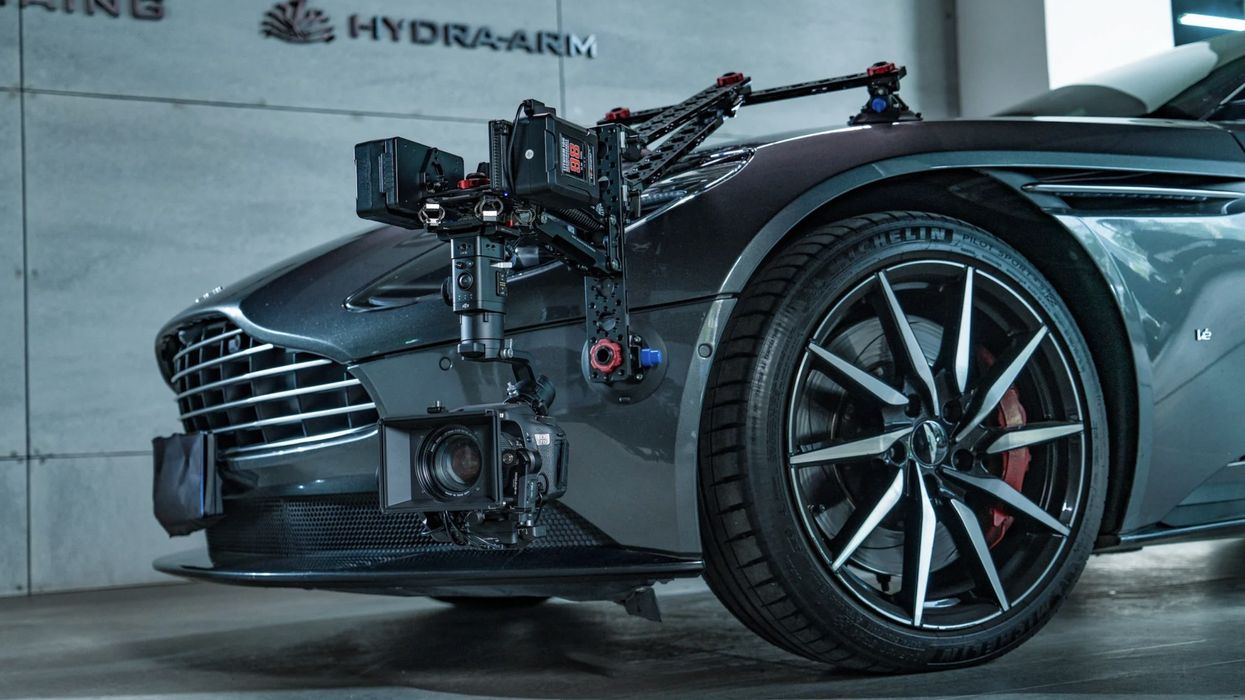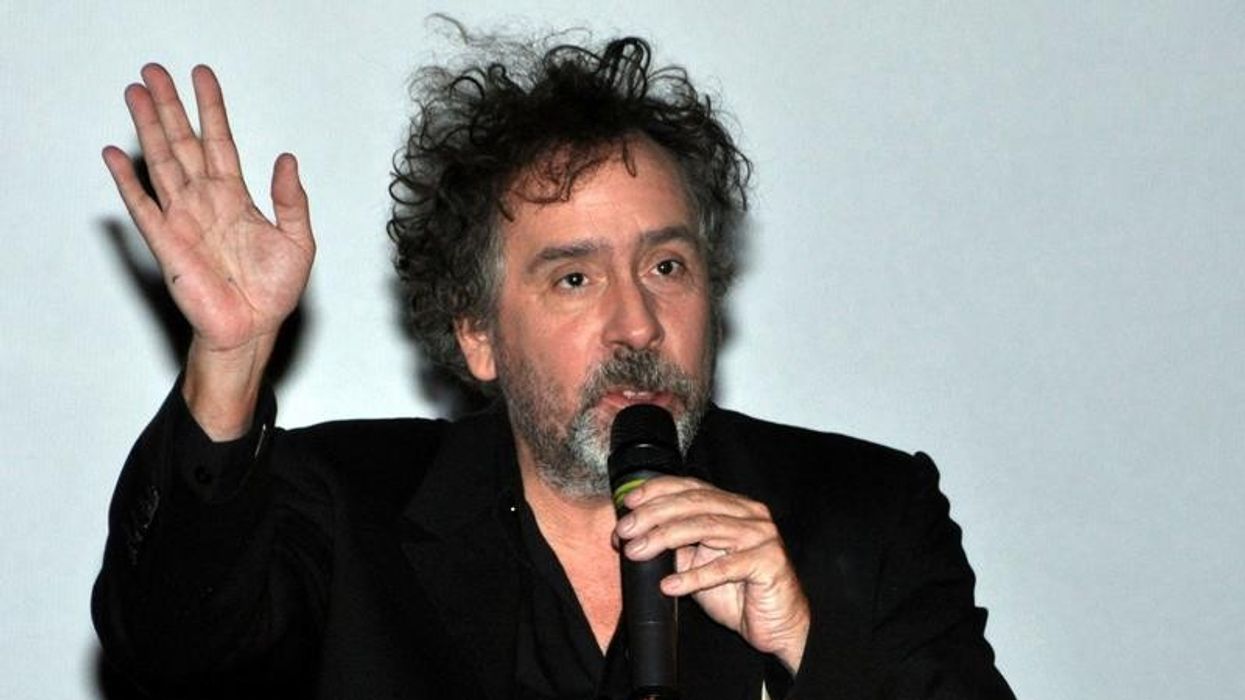How to Safely Get Moving Car Shots That Make Your Work Stand Out
Have you ever wondered how to build a car rig? Start here.

Cars are an essential part of life in the modern world, so it makes sense they show up in a lot of movie scenes. We spend a lot of our life in cars, going from one place to another, having conversations, processing our feelings, building up to confrontations. The automobile is one of our most important spaces.
Working with a car for motion pictures is significantly more complicated than other forms of filmmaking. Whether you want to do a DSLR car mount or build up a professional car mount for a major package like an Arri Alexa LF with a zoom, there are a whole host of things you need to understand to prepare. Even if you aren't going to be doing the rigging yourself, understanding how the rigging works can help you prepare effectively for your production.
Who and How Long
The first thing to understand about rigging a camera to a car is who does it and how long it takes.
On a big show, you might have a dedicated car specialist, but on smaller productions working with the car falls under the domain of the grip department, overseen by the key grip.
If you are considering becoming a grip, a DP, or a director, you should have a handle on how the camera is going to be mounted to have a real sense of what precisely you should be doing to plan these setups effectively.

The other thing to remember is that rigging a camera or light to a car takes much longer than you want it to. At a bare minimum for the simplest setups, it can take several hours, and for complicated rigs, it can take a half-day.
We recommend doing rigs ahead of time (if you can) so that the setup is ready to go when you need it. It's a waste of time to have the whole production wait while the grip team finalizes setup on the car mount.
Lockdown
We also need to remind all of our readers that the only truly safe way to shoot car mount work is in coordination with law enforcement in the area to control the street you are on. Generally, it is some agency like highway patrol, but every jurisdiction has some police force that controls streets, and you need to work with them if doing car mount work, unless you are working on a completely private road system on a studio backlot or other private set.
It is just not safe to do car work without them. Many filmmakers think, "I drive every day and don't have an accident, why can't I get a few shots without locking down the street?"
The key to remember is that routine creates safety. Most of the time you drive to somewhere you know how to go, you are paying attention to only driving, and everything is completely routine.
Shooting is non-routine. You have something rigged to the car, which can distract both you and, more importantly, other drivers. Even if you are being completely safe, another driver could see your camera, get distracted, and do something dumb. It happens all the time. A situation where someone else is doing something dumb, texting and driving and weaving from their lane into yours, gets even more dangerous if there is a camera on your car. You might not see them until too late if the camera obscures your view. The handling of your car might be different with the weight of the camera on it, causing you to lose control.
This can be even worse if you are shooting an actor giving a performance while driving. This should never happen if you don't control the street. It's fundamentally unsafe since a performance always requires some amount of concentration, and that attention slows reaction times.
In many jurisdictions, it is incredibly affordable to work with the police to control a road. Most areas want filmmaking and are willing to work with you. Even in areas like major cities where it is expensive, you can find ways around it.
Car Mount vs. Process Trailer
The next big decision you need to make is between mounting the camera directly to the vehicle or working with a process trailer.
A process trailer, a truck designed to mount the car in the back, initially seems out of reach for small productions, but they are actually somewhat affordable and well worth the investment for the increase in safety they provide. They will have a dedicated driver paying full attention to the road, and they generally offer room for rigging multiple cameras, lights, and crew members on board to make the process seamless.

However, sometimes you just can't afford a process trailer, but you can get a road shut down and want to do car shoots, and that is where a car mount comes into play.
Even on process trailer shoots, there are some shots you just can't get on a trailer. For instance, in the classic close-up on a wheel on the freeway, you need a moving car with its tires on the ground, and a trailer won't allow you to do that. So a direct car mount it is.

One option with a direct car mount is using a tow bar to tow the vehicle. This can mean that instead of having to rent a full-sized process trailer, you can source a powerful pickup truck with a tow hitch and tow the rear vehicle. This generally only works at low speeds, but still allows you to have someone else driving while the actor in the towed vehicle can give a solid performance.
All options involving directly mounting the camera to the vehicle require remote control of run/stop, focus/iris/zoom, and video monitoring to ensure full control of the shot.
Hostess Tray

By far the most common type of car mount is what is called a hostess tray. If any of you are thinking of Hostess, the brand of baked goods, it's not actually named after the cupcakes, but rather the type of tray that a hostess at a drive-in restaurant would mount to the window of your car.

Like hood mounts, these often require running additional secure straps, usually ratchet straps, to either the frame underneath the vehicle or over the roof to a rain gutter or roof rack to provide total stability.

This mount is particularly popular for the ease it allows for the covering of dialogue scenes. You can get a single profile shot, or by moving it forward a two-shot, with great ease with this setup. You generally work with the window down, but some will work with the window up, though that is less common. Window reflections are easier to control with flat side windows, so if you do have to work with the window up, you can do so and still see in the windshield.
However, it has a major drawback in that it makes the car wider, which can be a problem on narrow roads. Stories abound of a hostess tray set up on the passenger side window clipping a mailbox when the drive drifts. You must work with a safety team to provide proper lockdown of the road you are working on so that the driver of the vehicle can provide ample room on the side where the tray is mounted not to clip something.
Hood Mount
The other most common mount you'll work with is a hood mount. This is generally a larger platform that is designed to mount on a hood but can also go on a roof, truck, or truckbed, and offers a wider variety of mounting positions because of its larger platform.
In fact, it's not uncommon to see a camera and multiple lights all rigged to a hood mount at the same time. Those lights can be powered by a larger power inverter running off the car power, or increasingly might be battery-powered LED units. Just be aware that many power inverters aren't compatible with all lights, and especially fluorescent units will sometimes not strike from the power they output.

A hood mount often attaches via plates, though you will see some with suction cups. No matter how it attaches, it's vital to add additional ratchet-style safety straps to the units and secure the rig thoroughly.
Filmmakers should always have multiple ratchet straps in their kit at all times and learn how to properly secure them. The trick is to pull the strap as tight as possible before starting to ratchet.
Hood mounts are typically safer than hostess mounts since you aren't sticking out to the sides of the car, but the vision of the driver is blocked, so you absolutely cannot have someone drive the vehicle with a hood-mounted setup. You have to use a towbar, or a trailer, to ensure maximum safety.
Suction Cup
Suction cup mounts are becoming increasingly popular for ultra-small cameras like the DJI Osmo and GoPro Hero units. These use multiple suction cups to mount the camera, and generally app control of the camera to control things like run/stop, to get dynamic shots.
We can't count the times we've seen suction cups pop off. We recommend that you find a way to also strap down the unit with a ratchet strap to ensure it is firmly pressed against the car.
Suction cup units are also incredibly easy to forget about and can clip on objects like signs near the edge of the road. This can create a flying projectile that can injure someone. Please be sure to operate them safely.
Gimbal
Once you have your hood or hostess rig in place, it's becoming increasingly common to mount a stabilized car mount gimbal to the platform to provide for more stability and flexibility. While the MōVI Pro and Ronin 2 are popular options, smaller units like the Ronin S2 offer the features needed to give filmmakers the benefits of stabilization and remote pan, tilt and roll access to make for more dynamic car mount shots.
With gimbal work, remote video monitoring becomes even more important to ensure that you can precisely frame and operate the shot you are looking for.
Arm
On some larger jobs, you might be able to secure the services of an arm-mounted camera rig. This is a motorized arm system that generally mounts on the top of a vehicle and allows for getting dynamic shots where the camera moves in 3D space while the platform, the car, also moves in 3D space.
Long a mainstay of action cinema and car commercials, they are showing up in a variety of narrative productions as well.
Those features combine to make them the right platform for mounting an arm on top and doing chase shots. If you need a shot like this, it is absolutely your best move to hire a company that specializes in these shots. Executing them properly takes tremendous skill, and it's well worth the cost to work with experienced operators.
Conclusion
Whether you are a key grip, DP, director, or even a producer, understanding car rigging better is going to make your life working with cars easier and more pain-free.
There are a lot of options for rigging up car mount shots safely and effectively, provided you plan ahead. The more time you can spend in pre-production planning out the shots you want and need to tell the story, the better off you are in preparing for the specifics of your upcoming car shoot.
Just be sure to work on roads that are as controlled as possible to ensure maximum safety for yourself, your crew, and bystanders.














